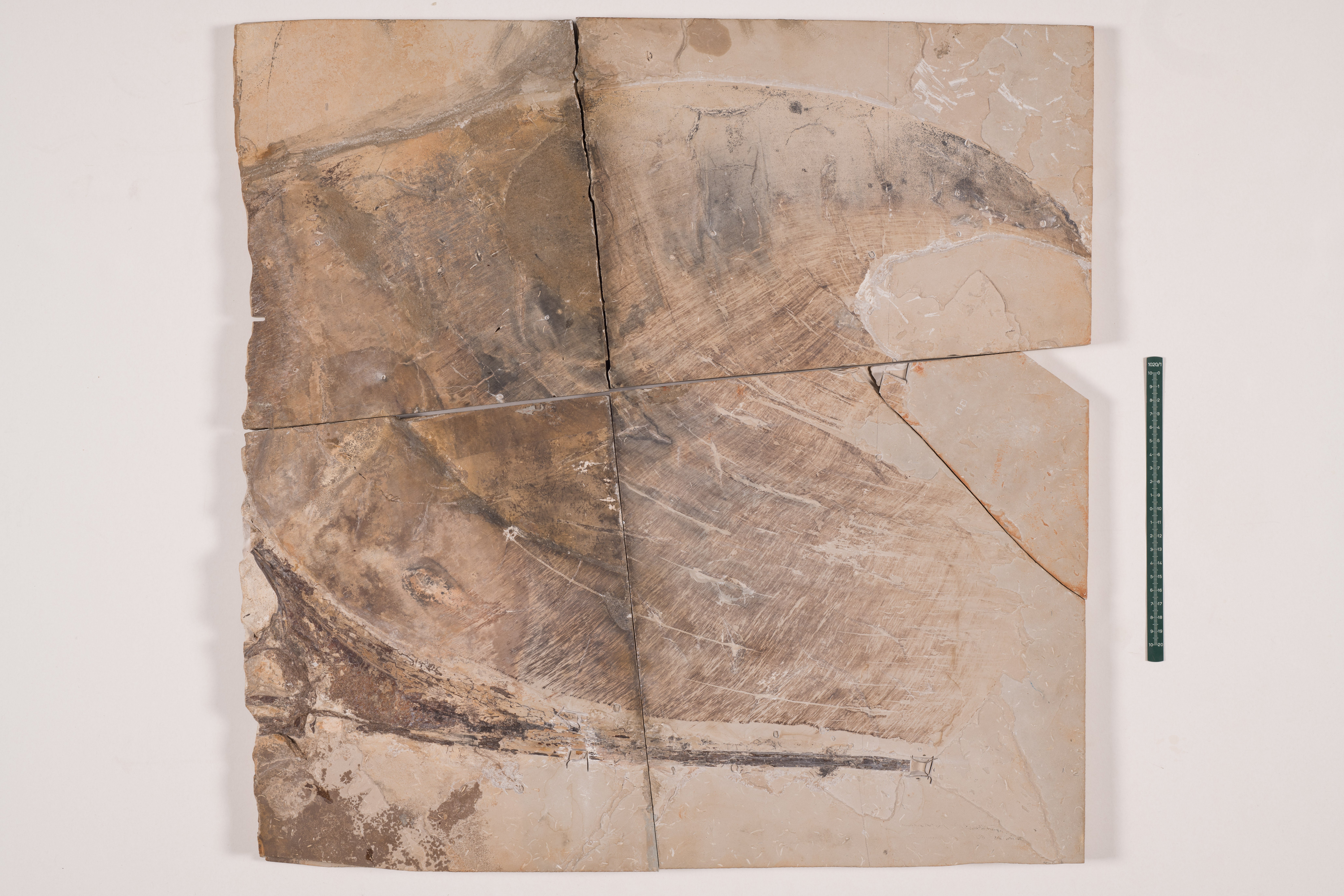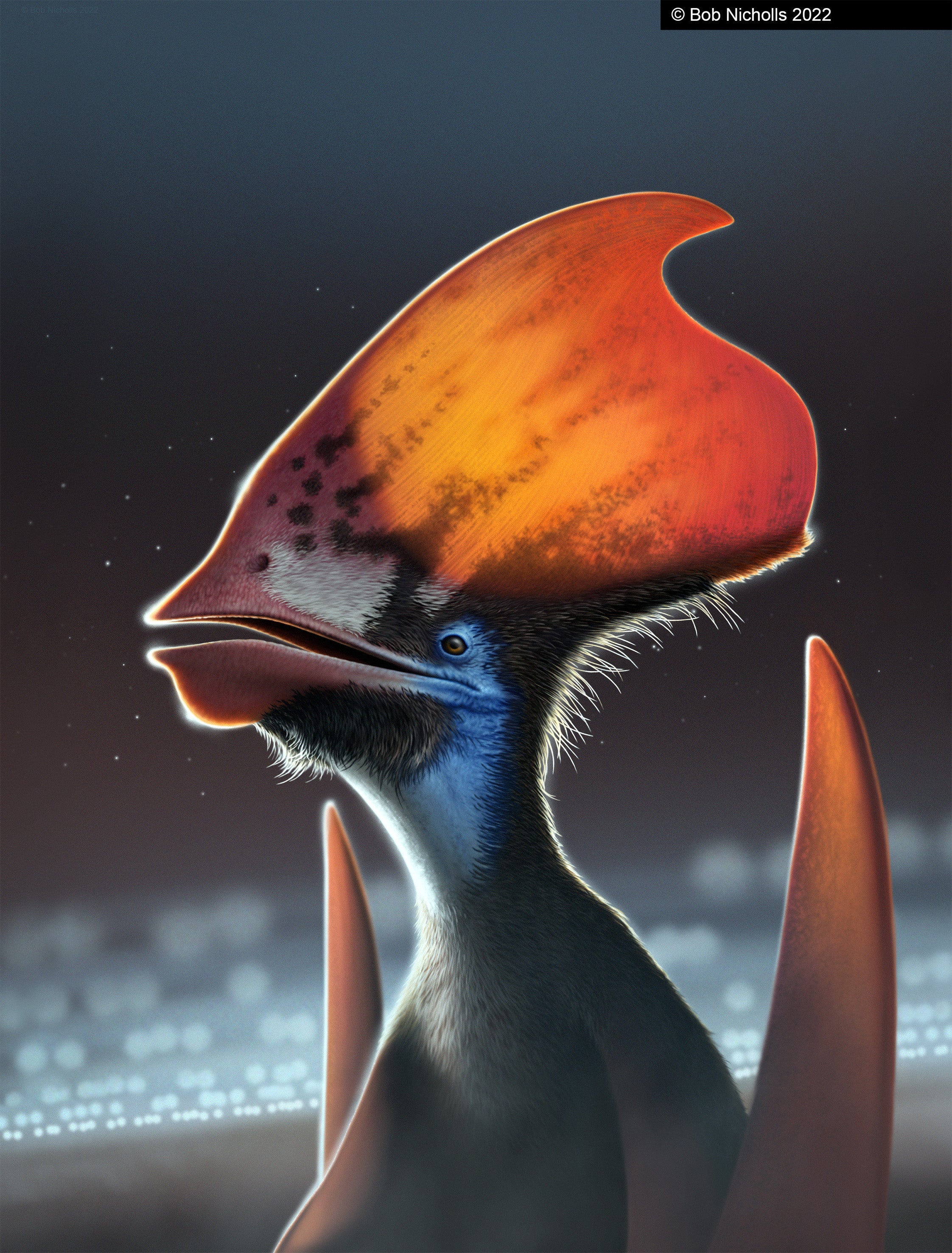A team of paleontologists scrutinizing the feathers on the back of a fossilized pterosaur’s head have found evidence that these flying creatures had the genetic infrastructure for multicoloured plumage.
Like the dinosaurs they lived alongside, pterosaurs had feathers. Those feathers have pigment from organelles like melanosomes, which produce and store melanin. But the team studying the 115-million-year-old Tupandactylus imperator — a large-crested pterosaur that lived in what is now northeastern Brazil — found different types of melanosomes, indicating the animal had at least two kinds of feathers that were different colours. The team’s research is published today in Nature.

“The big implication is that the ability to tune feather colour was probably present in the common ancestor of birds and pterosaurs,” said Maria McNamara, a paleontologist at University College Cork in the UK and lead author of the new paper, in a video call with Gizmodo.
In its fossilized form, T. imperator is most recognisable for the massive crest atop its head. The animal is part of a pterosaur group called the tapejarids, which were medium-sized but recognisable for the sail-shaped soft tissue crests that are remarkably preserved in fossils from Brazil’s Crato Formation. McNamara said that the fossil the team inspected also had melanosomes in its crest, though the team did not provide an analysis of those structures (and thus the colour of the crest) in the new paper.
Instead, they focused on two types of feathers on the back of the creature’s head. Some of the feathers were short and wiry — sort of like hair — while others branched out, like the feathers of modern birds.

“In general, if the same properties hold as in modern birds, we know that the really long, elongated sausage-shaped melanosomes are associated with black and dark-brown colours. We know that the more football-shaped — or a soccer ball-shaped — melanosomes are associated with ginger/orange colours,” McNamara said.
The team determined that branched feathers of T. imperator would have been lighter, while its short, wiry hairs would have been slightly dark. They aren’t sure purpose the colour pattern might have served.
The tapejarids have had their fair share of drama in recent years. Another one of the group, the 100-million-year-old Tupandactylus navigans, was nearly smuggled out of Brazil in 2013 alongside 3,000 other fossils that were confiscated by the Brazilian police and later distributed to two local museums. The T. imperator the recent research team examined was repatriated to Brazil this year; McNamara said it is now in the collections of the Rio de Janeiro Museum.
We’re just beginning to crack the code on the coloration of ancient animals; as more fossils are studied with even better instruments, we may one day be able to model the soft tissues of pterosaurs with precision.
More: Paleontologists Find Largest Jurassic Pterosaur Fossil Eroding on a Scottish Beach
